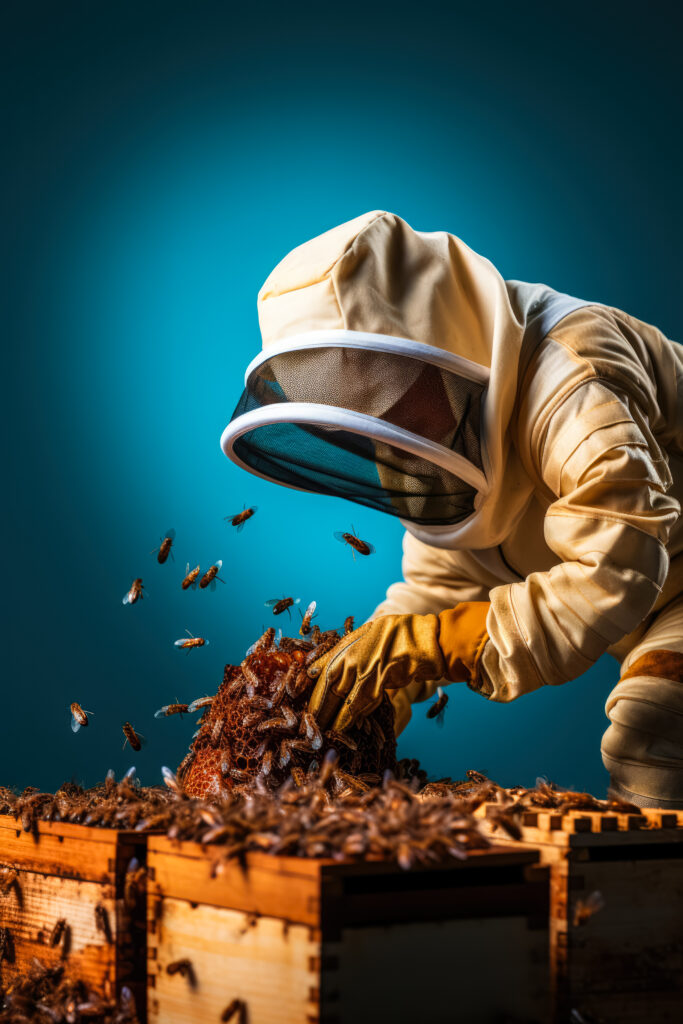Habitat Restoration and Preservation Features.
Habitat Restoration and Preservation in Apiculture: Nurturing Bees and Biodiversity for a Sustainable Future
Introduction
Apiculture, the practice of beekeeping, extends beyond the management of honeybee colonies; it includes a broader commitment to habitat restoration and preservation. "Habitat Restoration and Preservation" within apiculture focuses on creating and safeguarding environments that support bee populations, both native and honeybee species. This professional discourse explores the critical importance of habitat restoration and preservation, the challenges encountered, and the strategies that facilitate the coexistence of bees and biodiversity while ensuring agricultural sustainability.
The Significance of Habitat Restoration and Preservation
Habitat restoration and preservation within apiculture is of paramount significance for several reasons:
Bee Diversity and Pollination: Bee diversity is critical for robust and resilient ecosystems. Different bee species have varied foraging habits and preferences, contributing to the pollination of a wide range of plant species, including crops. This diversity enhances pollination services, fostering agricultural productivity and supporting biodiversity.
Ecosystem Resilience: Restored and preserved habitats provide essential food and nesting resources for bees. Bees, in turn, play a vital role in the pollination of many native plants, which are the foundation of diverse ecosystems. Healthy bee populations contribute to the resilience of these ecosystems.
Biodiversity: Restoring and preserving natural habitats promotes overall biodiversity by providing suitable conditions for various species of plants, insects, birds, and mammals.
Climate Change Mitigation: Restored habitats can act as carbon sinks, helping mitigate the impacts of climate change. Additionally, healthy ecosystems are better equipped to withstand and adapt to changing environmental conditions.
Challenges in Habitat Restoration and Preservation
Efforts in habitat restoration and preservation face various challenges:
Habitat Fragmentation: Urbanization, land development, and agricultural expansion have led to the fragmentation and loss of natural habitats, limiting the availability of forage and nesting sites for bees.
Invasive Species: Invasive plants and animals can disrupt native ecosystems and compete with native plant species that provide essential forage resources for bees.
Pesticide Use: The indiscriminate use of pesticides, particularly neonicotinoids and other systemic pesticides, can harm bee populations and disrupt their foraging patterns.
Climate Change: Altered weather patterns and shifting bloom times due to climate change can affect the availability of nectar and pollen resources.
Strategies for Habitat Restoration and Preservation
Effective habitat restoration and preservation involve a range of strategies:
Habitat Creation and Restoration: Efforts should focus on the creation of pollinator-friendly landscapes, the restoration of native plant communities, and the development of habitats rich in nectar- and pollen-producing plants.
Invasive Species Management: Controlling invasive plants and animals is essential to protect native plant species and the bees that rely on them.
Pesticide Reduction: Adopting sustainable farming practices that minimize pesticide use and avoid the application of pesticides during bloom periods is vital.
Education and Outreach: Raising awareness among landowners, farmers, and the general public about the importance of habitat restoration and preservation is essential for garnering support and action.
Research and Monitoring: Continuous research is necessary to assess the effectiveness of restoration efforts, understand the specific requirements of different bee species, and measure the impact on bee populations.
Legislation and Policy: Advocating for policies that protect and restore natural habitats, as well as promoting sustainable land management practices, is a crucial aspect of habitat restoration and preservation.
Benefits and the Way Forward
The benefits of habitat restoration and preservation are numerous:
Ecosystem Health: Restored habitats support the health of ecosystems, including pollinators and the plant species on which they rely.
Agricultural Productivity: Healthy bee populations contribute to enhanced agricultural productivity, yielding better crop yields and quality.
Biodiversity: Restored habitats contribute to the conservation of biodiversity, fostering the health and resilience of ecosystems.
Climate Change Mitigation: Restored habitats can serve as valuable carbon sinks, and resilient ecosystems can better withstand the effects of climate change.
In conclusion, habitat restoration and preservation within apiculture is not only a beekeeping endeavor but a commitment to the conservation of nature and the support of sustainable agriculture. Through a collective effort involving beekeepers, conservationists, policymakers, and the public, we can ensure the coexistence of bees and biodiversity in a way that sustains the environment and secures the future of bee populations. The commitment to habitat restoration and preservation is a testament to our understanding of the intricate web of life on which we all depend and our dedication to preserving it for generations to come.




